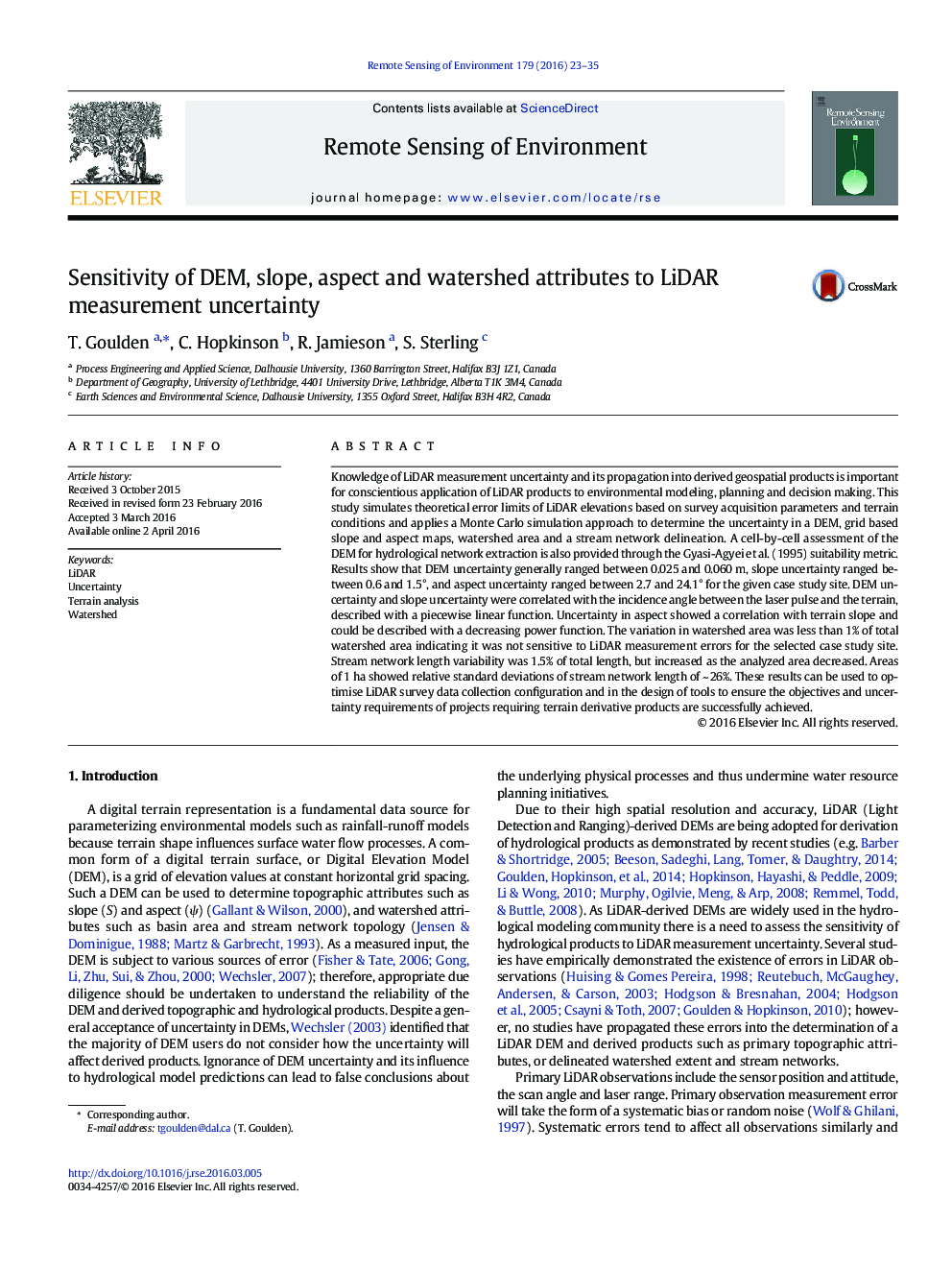| کد مقاله | کد نشریه | سال انتشار | مقاله انگلیسی | نسخه تمام متن |
|---|---|---|---|---|
| 6345460 | 1621221 | 2016 | 13 صفحه PDF | دانلود رایگان |

- Quantifies magnitude of uncertainty in terrain and watershed LiDAR products
- Quantifies spatial pattern of uncertainty in terrain and watershed LiDAR products
- Enhances LiDAR mission planning to meet targeted accuracy requirements
- Methodology for identifying areas of insufficient accuracy for hydrological products
Knowledge of LiDAR measurement uncertainty and its propagation into derived geospatial products is important for conscientious application of LiDAR products to environmental modeling, planning and decision making. This study simulates theoretical error limits of LiDAR elevations based on survey acquisition parameters and terrain conditions and applies a Monte Carlo simulation approach to determine the uncertainty in a DEM, grid based slope and aspect maps, watershed area and a stream network delineation. A cell-by-cell assessment of the DEM for hydrological network extraction is also provided through the Gyasi-Agyei et al. (1995) suitability metric. Results show that DEM uncertainty generally ranged between 0.025 and 0.060 m, slope uncertainty ranged between 0.6 and 1.5°, and aspect uncertainty ranged between 2.7 and 24.1° for the given case study site. DEM uncertainty and slope uncertainty were correlated with the incidence angle between the laser pulse and the terrain, described with a piecewise linear function. Uncertainty in aspect showed a correlation with terrain slope and could be described with a decreasing power function. The variation in watershed area was less than 1% of total watershed area indicating it was not sensitive to LiDAR measurement errors for the selected case study site. Stream network length variability was 1.5% of total length, but increased as the analyzed area decreased. Areas of 1 ha showed relative standard deviations of stream network length of ~ 26%. These results can be used to optimise LiDAR survey data collection configuration and in the design of tools to ensure the objectives and uncertainty requirements of projects requiring terrain derivative products are successfully achieved.
Journal: Remote Sensing of Environment - Volume 179, 15 June 2016, Pages 23-35